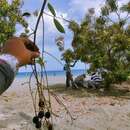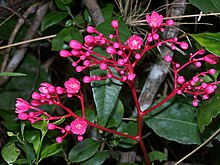pt-BR
nomes no trilho de navegação


Симаруба яке Маруба ( лат. Simarouba ) — Simaroubaceae семьяысь Шор но Лымшор Америкалэн куаро писпу. Дуннеын тодмо ог 10 пӧртэм.
Симаруба либö Маруба ( латин Simarouba ) — симаруба котырса корья пу увтыр. Сійӧ быдмӧ Шöрвыв да Лунвыв Америкаын.
Симаруба или Маруба ( лат. Simarouba ) — симаруба котырись корья пу увтыр. Симаруба увтырӧ пырöны 10 вид. Симаруба пантасьӧ Медшöр да Лунвыв Америкаын.
Симаруба яке Маруба ( лат. Simarouba ) — Simaroubaceae семьяысь Шор но Лымшор Америкалэн куаро писпу. Дуннеын тодмо ог 10 пӧртэм.
Симаруба или Маруба ( лат. Simarouba ) — симаруба котырись корья пу увтыр. Симаруба увтырӧ пырöны 10 вид. Симаруба пантасьӧ Медшöр да Лунвыв Америкаын.
Симаруба либö Маруба ( латин Simarouba ) — симаруба котырса корья пу увтыр. Сійӧ быдмӧ Шöрвыв да Лунвыв Америкаын.
Simarouba is a genus of trees and shrubs in the family Simaroubaceae, native to the neotropics. It has been grouped in the subtribe Simaroubina along with the Simaba and Quassia genera. They have compound leaves, with between 1 and 12 pairs of alternate pinnate leaflets. Their flowers are unisexual, relatively small (around 1 cm long) and arranged in large panicles. Plants are dioecious, bearing only male or female flowers.[2] The individual flowers have between 4 and 6 sepals and petals and between 8 and 12 stamens. The fruit is a carpophore and has up to 5 drupaceous mericarps.
Adolf Engler and Arthur Cronquist separated the species in the genus, based mainly on the morphology of their flowers, but also using differences in their leaf structure. S. amara, S. glauca and S. versicolor are continental tree species and are often confused with each other, particularly in areas where more than one species is present in the flora. S. amara can be distinguished by having smaller flowers and anthers than S. glauca and S. versicolor and by it having straight, rather than curved petals; its fruit are also smaller. S. glauca can be distinguished by the lack of trichomes on its leaves compared with those of S. versicolor, which has dense tomentose leaves. S. versicolor has a greater variation in flower size than S. glauca and the leaf veins of S. glauca are generally more evident than those of S. versicolor. Geographically, S. glauca and S. versicolor are easy to distinguish since the southerly range of S. glauca is limited to Panama, whereas S. versicolor is only found in South America.[1][3] A phylogenetic analysis in 1995 based on the large sub-unit of rubisco suggested that Simarouba was most closely related to the Leitneria and Ailanthus genera,[4] but a later study in 2007, based on three chloroplastic genes and one nuclear gene, found it was most closely related to Pierreodendron and Simaba.[5]

S. berteroana, S. laevis and S. tulae are endemic to the Caribbean islands.[3]
In 1713, the genus was discovered by French explorers. Between 1718 and 1725, the bark was exported to France where it was used to treat an epidemic of dysentery. The bark of Simarouba species has been used by indigenous tribes as a tea to treat many diseases.[6][7] The seeds of Simarouba glauca have been proposed as suitable for producing edible oils in India.[8] Simarouba amara is harvested for timber, with its bright and lightweight timber being highly sought after in European markets to use in making fine furniture and veneers.[9] Simarouba glauca, also known as Lakshmi Taru in India, is also valued for its wood.
The alianthus webworm (Atteva aurea) is a pest of the genus Simarouba.[10]
Simarouba is a genus of trees and shrubs in the family Simaroubaceae, native to the neotropics. It has been grouped in the subtribe Simaroubina along with the Simaba and Quassia genera. They have compound leaves, with between 1 and 12 pairs of alternate pinnate leaflets. Their flowers are unisexual, relatively small (around 1 cm long) and arranged in large panicles. Plants are dioecious, bearing only male or female flowers. The individual flowers have between 4 and 6 sepals and petals and between 8 and 12 stamens. The fruit is a carpophore and has up to 5 drupaceous mericarps.
Adolf Engler and Arthur Cronquist separated the species in the genus, based mainly on the morphology of their flowers, but also using differences in their leaf structure. S. amara, S. glauca and S. versicolor are continental tree species and are often confused with each other, particularly in areas where more than one species is present in the flora. S. amara can be distinguished by having smaller flowers and anthers than S. glauca and S. versicolor and by it having straight, rather than curved petals; its fruit are also smaller. S. glauca can be distinguished by the lack of trichomes on its leaves compared with those of S. versicolor, which has dense tomentose leaves. S. versicolor has a greater variation in flower size than S. glauca and the leaf veins of S. glauca are generally more evident than those of S. versicolor. Geographically, S. glauca and S. versicolor are easy to distinguish since the southerly range of S. glauca is limited to Panama, whereas S. versicolor is only found in South America. A phylogenetic analysis in 1995 based on the large sub-unit of rubisco suggested that Simarouba was most closely related to the Leitneria and Ailanthus genera, but a later study in 2007, based on three chloroplastic genes and one nuclear gene, found it was most closely related to Pierreodendron and Simaba.
 Inflorescence of Simarouba tulae
Inflorescence of Simarouba tulae S. berteroana, S. laevis and S. tulae are endemic to the Caribbean islands.
Simarouba es un género con unas 10 especies de plantas de flores de la familia Simaroubaceae.[1]
Simarouba es un género con unas 10 especies de plantas de flores de la familia Simaroubaceae.
Simarouba est un genre d'arbres originaires des forêts néotropicales[2], appartenant à la famille des Simaroubaceae (qui lui doit son nom), et dont l'espèce type est Simarouba amara Aubl.[1].
Selon The Plant List[3] :
En 1775, le botaniste Aublet propose la diagnose suivante[1] :
« SIMAROUBA. (Tabula 331 & 332.)
MASCULI FLORES.
CAL. Perianthium monophyllum, quinquedentatum ; denriculis ſubrotundis, acutis.
COR. Petal a quinque, albicantia, lanceolata, calici inſerta ad ambirum diſci.
STAM. Filamenta decem, corollæ longitudine, diſco inſerta infra germen. Antheræ oblongæ, incumbentes, biloculares. Squamulæ decem, ſubrotundæ, villoſæ, baſi filamentorum interiori adnatæ.
HST. Germen ſterile, ſubrotundum, depreſſum, quinqueſtriatum, ſquamulis filamentorum tectum. Stylus nullus. Stigma nullum.
FEMINEUS FLOS.
CAL. Perianthium ut in maſculo.
COR. Petala ut in maſculo.
STAM. nulla. Squamulæ decem, villoſæ, germen ambientes.
PIST. Germina quinque, coadnata, diſco carnoſo, orbiculato inſidentia. Stylus carnoſus, quinqueſtriatus. Stigmata quinque, patentia.
PER. Capſule quinque, ſubcarnoſæ, nigræ, ovatæ, latérales, diſſantes, receptaculo carnoſo, orbiculato inſertæ, uniloculares.
SEM. ovatum, teſta fragili incluſum. »
Simarouba est un genre d'arbres originaires des forêts néotropicales, appartenant à la famille des Simaroubaceae (qui lui doit son nom), et dont l'espèce type est Simarouba amara Aubl..
Simarouba é um género botânico pertencente à família Simaroubaceae[1].
Simarouba é um género botânico pertencente à família Simaroubaceae.